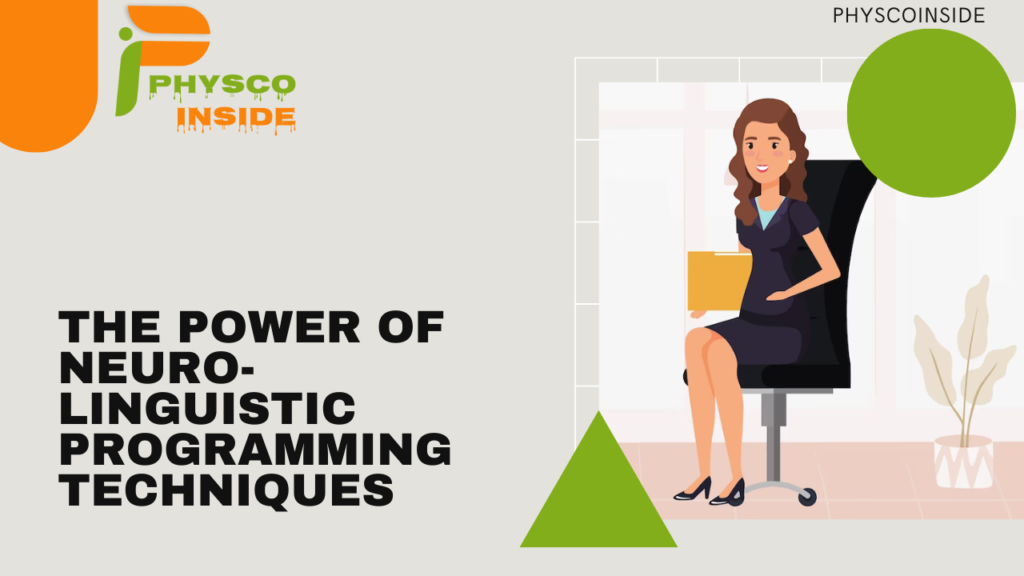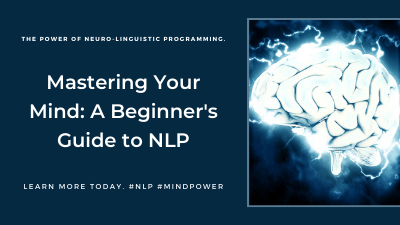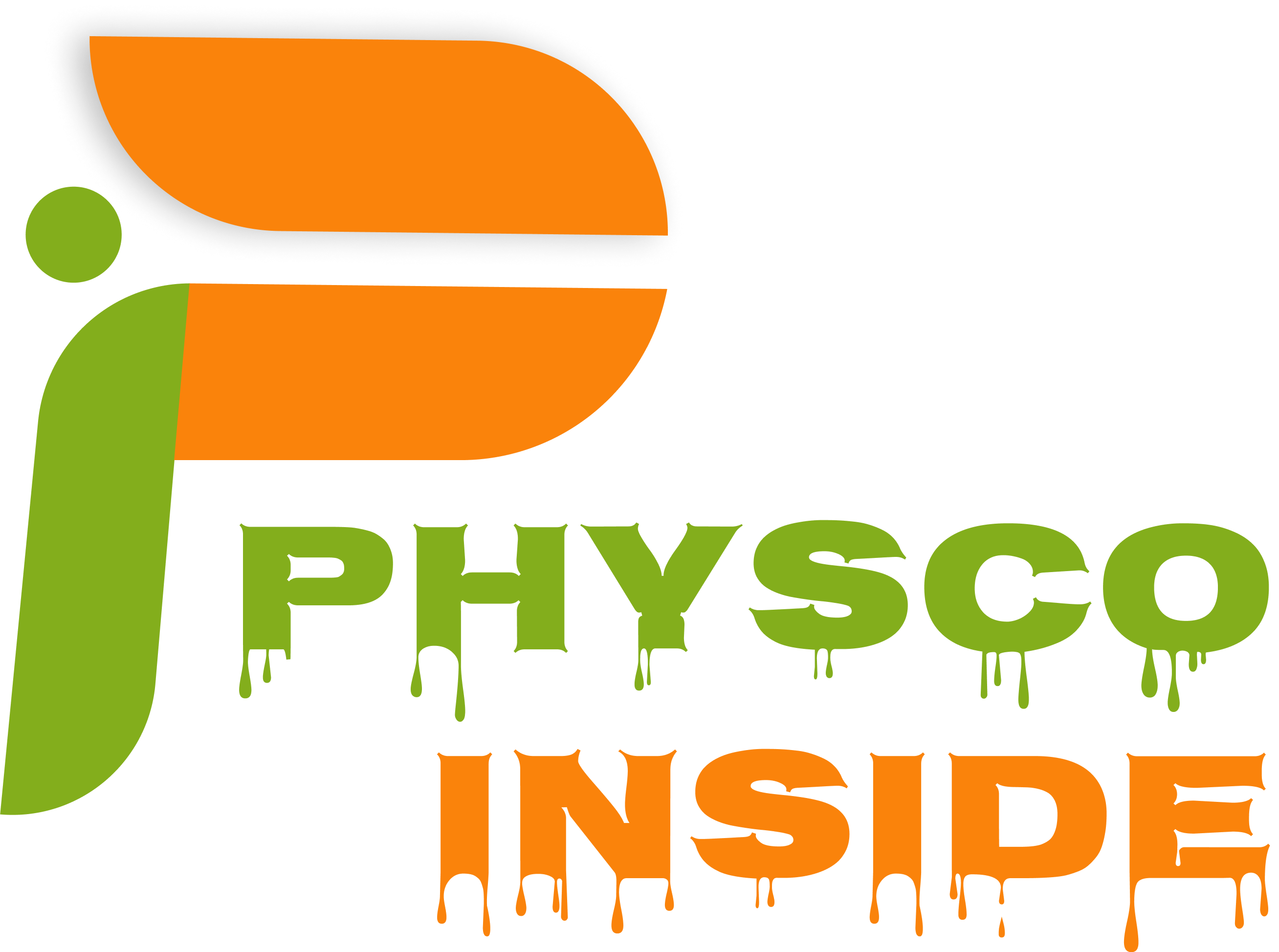1) Introduction:
Neuro-Linguistic Programming (NLP) is a Mental methodology that includes analyzing procedures utilized by effective people and applying these methods to achieve individual goals. It combines Cognitive Behavioral Therapy and phonetic standards to impact cerebrum conduct through language and different kinds of communication. NLP aims to assist people with changing their thoughts, ways of behaving, and emotional reactions to work on their lives. This short understanding of NLP explores its essential ideas, procedures, and the potential advantages it offers for self-improvement and communication.
2) Who invented Neuro-Linguistic Programming?
NLP was developed by Richard Bandler and John Grinder in the 1970s. Neuro-linguistic Programming (NLP) is an approach rooted in Psychology. It focuses on the use of language and Behavioral patterns to achieve life goals. It investigates the relationship between Neurological Processes (neuro), language (Linguistic), and Behavioral patterns learned through experience (Programming). The goal of NLP techniques is to assist individuals in Enhancing their communication skills and Overcoming phobias. They also aim to disturb Harmful thinking patterns and short-term personal growth. NLP emerged in the 1970s. Various areas such as therapy, education, business, and coaching use it to attain desirable changes in behavior and results.
3) What does the Word “Neuro-Linguistic Programming” Mean?
- Neuro: Neuro means Nervous system Processes our experiences through Senses(Thoughts).
- Linguistic: The word, “L” means Language (Linguistic, words) a communication system in which our experiences are given meaning to us such as pictures, smells, tastes, feelings, and Self-Talk.
- Programming: The word, “P” means (Programming, Behavior)- How our mind and body respond to different Interior Considerations and outer data to deliver Unnecessary ways of Behaving, habits, and thinking.
4) What are the main types of NLP?
Neuro-linguistic programming (NLP) Develops a few primary Types, each with its own Concentration and technique:
4.1) Traditional NLP:
Traditional NLP is also known as “Classical NLP”. This type Highlights the Importance of Compatibility and behavior. Strategies include relationship building, Rethinking, and Attaching. It uses methods like Compatibility building, Securing, Rethinking, and investigating sub-modalities to work with Self-Improvement and change. Anchoring includes partner absolute t Improvements with wanted close to home states while Rethinking shifts points of view to make Additional Engaging Effects. By getting it and Applying language designs and mental techniques, experts plan to upgrade Relational connections and impact others particularly. Traditional NLP shapes the reason for different applications in treatment, training, business, and Schooling and working on the human way of Behaving.

4.2) New Code NLP:
It is developed by Grinder and Judith Delozier. It Highlights Ease and quick change. Procedures center on stating the managers, real Sharpness, and “code shifts” to work with individual change. Not at all like traditional NLP, New Code NLP Utilizes dynamic cycles to Avoid Conscious Obstruction and impact change at the insensible level. Procedures frequently include Activating creative states and setting out open doors for wild bits of knowledge and forward hurdles. By getting to and preparing the Person’s internal assets, New Code NLP means to advance significant changes in judgment, conduct, and Completion. Encouragement Improved individual possibility and prosperity.
4.3) Third Generation NLP:
This type absorbs experiences from fields like mental brain research and Neuroscience. It Underscores Foundational thinking and the job of unconscious cycles in conduct change. Third-generation NLP expands upon traditional NLP standards by Incorporating Coexistent bits of knowledge from mental brain research and Neuroscience. It Stresses Fundamental Reasoning, Recognizing the complex Transactions among people and their more Extensive Settings. This approach investigates further layers of unconscious cycles, Conviction Frameworks, and values to work with complete individual change. By Embracing the powerful connection between psyche, body, and climate, Third Generation NLP offers Imaginative Methodologies like Self-improvement, Consistency, and change on a surface level.
4.4) Applied NLP:
This type finds applications in fields like business, training, and treatment. It adjusts NLP Methodologies to address Assorted individual and Authoritative Requirements. Applied NLP Customizes Neuro-Linguistic Programming (NLP) methods to include fields like business, training, treatment, and Instructing. It tailors systems to suit different individual and Hierarchical Necessities, Utilizing NLP standards for Commonsense applications. In Schooling, it helps learning and Improvement Processes. In treatment, it works with Self-Improvement and Profound mending. It upholds Objective achievement and Execution Improvement. In training Applied NLP Grandstands the Flexibility and possibility of NLP aiming to diffuse difficulties and Improve human potential.
4.5) Integral Eye Movement Treatment (IEMT):
Andrew T. Austin created IEMT. This type shares Similarities and uses eye development to handle intense subject matters and work with change. Integral Eye Movement Treatment (IEMT) however is connected with NLP in particular. It Utilizes eye development to handle intense subject matters and actuate change. It targets Explicit eye developments to disturb designs related to negative feelings and horrible Recollections. IEMT intends to work with fast and Enduring change by tending to Fundamental mental and Profound examples. It’s used in Remedial Settings to deal with conditions like PTSD (Post Traumatic Stress Disorder), Nervousness, and fears. It offers an extraordinary way to deal with Profound Resolution and Self-Improvement.
Each type offers an evident way to deal with understanding and Impact the human way of Behaving, Consistency, and Self-Improvement inside the overall structure of NLP.
5) Which Techniques are involved in NLP?
Neuro-linguistic Programming (NLP) is a Flexible Methodology that investigates the association between Neurological cycles, language, and personal conduct standards learned through experience. There are a few principal Techniques Of NLP that professionals use to work with change and improve Prosperity.
5.1) Anchoring
Anchoring includes partnering a particular boost with a specific Profound state or mental state. By over and over Matching a tactile boost (like a touch, word, or picture) with an ideal Profound state, people can figure out how to get to that state rapidly and Successfully.
For example, a Specialist might utilize Anchoring to help a client get to Sensations of Certainty or Unwinding during Distressing circumstances by partnering those sentiments with an actual touch or a specific word.

5.2) Reframing\Rethinking:
Rethinking is a procedure used to impact how an individual sees what is happening by changing the edge or setting through which it is seen.
By moving points of view, people can Consider Encounters in a more sure or Enabling light, Prompting changes in feelings and ways of Behaving. Therapists Frequently utilize Rethinking to assist clients with Defeating negative idea designs or Reevaluating past injuries in a manner that advances development and strength.
5.3) Compatibility(Rapport) Building:
Compatibility building is the foundation of an Agreeable relationship in light of common trust, understanding, and Sympathy.
This strategy includes Reflecting and Matching verbal and Nonverbal prompts, like motions, acts, manner of speaking, and language designs, to create a feeling of association and Compatibility with others. In brain science, building Compatibility is Fundamental for laying out a healing alliance among Specialists and clients, Encouraging transparency, and working with powerful Consistency and joint effort.
5.4) Meta-Modeling
Meta-modeling includes Distinguishing and testing the poetic designs and mental Deformation that Underlie Insufficient Consistency and tricky Reasoning examples.
By posing exact Inquiries and Explaining Uncertain or mangled language, people can acquire knowledge about their Fundamental Convictions, Suspicions, and judgments. Therapists Frequently use Meta-Demonstrating to help clients uncover and challenge Restricting Convictions, work on Mindfulness, and advance more exact and Productive Compatibility.
5.5) Swish Pattern
The Swish design method actively replaces undesirable behaviors or reactions with more positive ones by creating a bright mental image of the desired outcome and intentionally replacing the undesirable behavior with the ideal one.
By over and over Visualizing the ideal conduct in a Convincing and particular way, people can Reconstruct their psyche and mind and build up sure social changes. Clinicians might use the Swash example to assist clients with Defeating Tendencies, fears, or negative Self-talk by Replacing them with better other options.
5.6) Parts Integration
Parts Integration Joining includes settling unseen struggles or internal issues by incorporating clashing parts or parts of oneself into an Additional strong and Agreeable sum.
This method recognizes that people might Encounter inward Intentions because of Clashing Convictions, wants, or values, which can upset Self-improvement and Prosperity. Analysts use parts combination to assist clients with Accommodating internal struggles, lining up with their Fundamental beliefs, and Accomplishing more Noteworthy Self-Acknowledgment and reunion.
5.7) Future Pacing
Future pacing involves actively practicing and imagining future scenarios where desired changes or results have been achieved, thereby programming the subconscious mind for success.
By Strikingly Visualizing oneself Achieving Objectives or Defeating Difficulties, people can protect their Inspiration, Certainty, and commitment to making a move. Clinicians Frequently utilize future pacing to assist clients with beating Discouragement, assembling strength, and keeping up with force toward their purpose during treatment.

5.8) Sub Modalities
Sub-modalities suggest better Differentiation inside physical Encounters, like the size, variety, Brilliance, and area of mental pictures, sounds, and Sensations.
By Controlling these sub-modalities, people can modify the force and Profound effect of their inward Portrayals, Prompting changes in taste and close-to-home reactions. Therapists use sub-modality procedures to assist clients with beating fears, injuries, and gloomy feelings by Reshaping their Interior picture and making more creative states.
5.9) Supportive note :
By Coordinating these methods into curing practice, Therapists can enable people to conquer Difficulties, Accomplish their Objectives, and develop more Noteworthy Prosperity and Satisfaction in their lives.
6) How Neuro-Linguistic Programming work?
Neuro-Linguistic Programming (NLP) works by inspecting the relationships between Neurological Processes (neuro), language (Linguistic), and patterns of behavior (Programming). NLP attempts to identify and change unconscious Tendencies or Obstacles of a Singular guide of the world.
7) What are the Processes for NLP?
To learn about the Processes for NLP, read the following details:
7.1) Understanding Perception
NLP starts by Perceiving that people see and decode the world because of Conceptual Encounters that are Impacted by their remarkable Eurological cycles.
7.2) Identifying Patterns
It tries to recognize designs in language, conduct, and points of view, understanding how these examples shape individual experiences and results.
7.3) Mediation Techniques
NLP Utilizes different Mediation procedures, for example, Securing, Rethinking, arranging, and Accomplishing changes in conduct, feelings, and Correlation.
7.4) Language Manipulation
Through the control of language designs, NLP helps people Reevaluate their Encounters, deal with feelings, and impart successfully.
7.5) Representation and Mental Strategies
Methods including perception and mental techniques are used to improve objective setting, inspiration, and execution.
7.6) Application in Different Contexts
NLP’s standards and strategies are applied across varied settings, including therapy, business, education, and sports. They support self-improvement, behavior change, and enhanced outcomes.
8) What are the basic Applications of NLP?
Neuro-Linguistic Programming (NLP) has a few basic Applications like:
8.1) Personal Growth
NLP methods help people defeat limiting judgment, deal with feelings, and define and accomplish objectives.
8.2) Communication Enhancement
NLP further develops relational abilities, including undivided attention, affinity building, and powerful language designs.
8.3) Therapeutic Intervention
NLP is utilized in coaching and therapy to address various mental health issues such as anxiety, phobias, trauma, and PTSD. It works by targeting underlying thoughts and behaviors.
8.4) Performance Improvement
NLP helps with sports, expressions, and business execution by simplified mental concentration, certainty, and inspiration.
8.5) Leadership and Management
NLP improves authority characteristics, group building, compromise, and discussion abilities, adding to hierarchical achievement.
8.6) Learning and Education
NLP further develops learning acceptability by improving memory maintenance, inspiration, and consistency among instructors and students. These applications show the flexibility and ability of NLP in encouraging individual and expert turn of events.
9) How NLP is used as a Therapeutic Approach?
- Neuro-linguistic Programming (NLP) has been used as a beneficial methodology for the last few decades. NLP began as a series of procedures for self-awareness and performance enhancement. It has since been adopted as a Therapeutic Approach.
- NLP advisors utilize different procedures, for example, rethinking, anchoring, and perception to assist people with beating obstructions, dealing with feelings, and accomplishing self-awareness. NLP treatment intends to address a great many issues, including tension, depression, injury, anxiety, trauma, and self-limiting beliefs, by investigating the association between language, thoughts, and behavior.
- While NLP can be powerful for certain people, its viability might fluctuate, and it’s significant to talk with a certified specialist to decide the most reasonable beneficial methodology for individual necessities.
10) What is the role of “Age” in NLP?
Age can impact the utilization of Neuro-linguistic Programming (NLP) strategies. Younger people might be more versatile and responsive to new strategies due to their ability to learn and adapt. While more old people might have collective more educational experience and be more cultivated in their beliefs. Mental and formative factors likewise assume a part, with professionals frequently fitting NLP mediations to match the age and mental capacities of the person. Be that as it may, NLP can be helpful for individuals of any age, with professionals changing methods appropriately.
11) Conclusion
Neuro-Linguistic Programming (NLP) offers a charming way to deal with understanding and impacting the human way of behaving and communicating. By investigating the associations between neurological cycles, language, and standards of conduct, NLP gives instruments for self-improvement and fascinating messages. Whether you’re hoping to work on relational connections, upgrade proficient abilities, or just increase your knowledge of the human mind, NLP’s standards and procedures can offer significant systems. As we’ve seen, the broadness of NLP’s application is immense, promising open doors for development and figuring out in our confusing, interconnected world.
12) Frequently Asked Questions
Answer: NLP is a psychological approach that investigates the connection between language, thought examples, and conduct. Its center standards incorporate the possibility that people have the help essential for change, the brain-body association, and the significance of compelling consistency for progress.
Answer: NLP centers around present and future-situated methods to work with fast change, while traditional therapy might dive into previous experiences and feelings.
Answer: While NLP is not a substitute for customary treatment, it very well may be absorbed into medicinal ways to deal with addressing issues like nervousness, anxiety, depression, fears, injury, trauma, and confidence issues.
Answer: Normal NLP methods incorporate anchoring, reframing, rapport building, meta-modeling, representation, and sub-modalities. They are applied to help people reinvent thought patterns, deal with feelings, and accomplish self-improvement.
Answer: NLP treatment normally includes putting forth objectives, surveying current ways of behaving and thought patterns, choosing and applying fitting procedures, coordinating changes, assessing progress, and giving conclusions and follow-up.
Answer: NLP procedures, for example, rethinking, anchoring, and representation help people distinguish and challenge limiting beliefs and negative idea patterns. By reexamining viewpoints, partnering positive feelings with clear upgrades (anchoring), and envisioning wanted results, people can defeat obstacles and accomplish self-awareness.


